How long does it take to get a divorce in California? The answer to that question is—it depends.
Under California family law, a couple cannot be divorced until at least six months have transpired from the date the person filing for divorce properly serves his or her spouse with the divorce papers. In other words, at a minimum, it will take six months for the divorce process to complete. This mandatory waiting period is required by law.
It is important to understand that in many cases, the amount of time it takes to complete the divorce process exceeds the six month waiting period. Before finalizing a divorce, California family law requires both parties to complete certain procedural steps, which are discussed in more detail below.
Pre Divorce Steps to Take
Many common legal issues extend the amount of time it takes to complete the divorce process. The following are the most common issues that affect how long it will take to finalize a divorce:
- Child custody & visitation
- Child support
- Spousal support also known as alimony
- The division of property, especially real property, or a business entity (the assets and debts accumulated by either spouse during the marriage).
Understanding the steps involved in the divorce process is very important. Knowing what to expect can provide you with invaluable peace of mind during an otherwise chaotic time, allowing you to make sound, informed decisions along the way.
The following is a roadmap outlining the specific steps involved in the divorce process.
Filing For Divorce
To initiate the divorce process, you must first complete several forms, including a Petition and Summons form that will be filed with the family law clerk’s office. For a complete list and free copy of the forms required, please click here.
Once your divorce papers are filed, you must submit the original documents, plus two additional copies to the family law business office. A $435.00 filing fee is also required. If your financial circumstances are such that you cannot afford this filing fee, you may request for these fees to be waived.
The family law clerk will file and keep your original divorce paperwork. The clerk will stamp the additional copies and return them to you. One copy is for your records, the other will be served on your spouse.
Serving The Divorce Papers On Your Spouse
The next step in the divorce process is to serve the divorce papers on your spouse with blank response forms.
Generally, this may be done in person or by mail. Regardless, service is only valid if it is done by an individual 18 years or older who is not a party to your case. In other words, you are prohibited from serving your spouse with the divorce papers.
Personal service takes place when the server directly hands your spouse a copy of the divorce papers and the blank response forms.
Service can also be achieved by mail, provided your spouse signs, and returns a document acknowledging service of the divorce papers.
This form is called a Notice and Acknowledgment of Receipt (FL-117), which must be mailed along with your divorce papers and blank response forms. Once received, your spouse has twenty days to date, sign, and return the Notice and Acknowledgment of Receipt to you.
Responding to the Divorce
The spouse served with the divorce papers has 30 days from the date the documents were received to file and serve their response.
The same rules outlined above regarding the filing and service of the divorce papers apply to the responding party. The responding party must file and serve their response pleadings. However, service by mail does not require the petitioning party to sign and return a Notice and Acknowledgment of Receipt form.
If the responding party fails to file and serve a response promptly, the party who initiated the divorce process may seek a “request for default.” This may result in adverse consequences for the responding party, as the court has the authority to adopt the filing party’s requests as outlined in the initial pleadings and may ignore the other spouse’s position entirely when making final orders on the matter.
Exchanging Financial Disclosures
Within 60 days of filing the divorce papers, the party who initiated the divorce must complete and serve a set of mandatory forms on their spouse. These should disclose specific financial information, including all known community and separate property assets, debts, income, and expenses. The responding party must complete the same process within 60 days of filing his or her Response with the family court.
The underlying purpose of this statutory requirement is to ensure a proper division of the community estate, and fair and sufficient spousal and child support awards.
It’s important to understand that this step cannot be bypassed. The exchange of both party’s financial information is mandatory, even when the parties have reached a settlement agreement resolving all issues.
Temporary Orders
Often, a spouse will make a request to the Court for immediate orders before finalizing the divorce. The most common requests are for temporary child custody and visitation orders, child support, and spousal support—also known as alimony.
If you anticipate issues that will arise between you and your spouse during the divorce process, you may want to file your request for temporary orders at the same time you file your initial divorce papers or response. If you and your spouse are on the same page regarding issues pertaining to your children and/or financial support, there may not be a need for temporary orders.
If unforeseeable issues arise down the line, you can always file a motion later in the divorce process. The need for temporary orders and the timing of your request truly depends on the specific facts of your case.
Finalizing Your Divorce
In California, spouses are given two options for how they can complete the divorce process. Finalizing a divorce can be achieved either by filing a written settlement agreement signed by both parties or participating in a trial before the judge.
A contested divorce is where the parties are unable to reach a full settlement agreement which results in a trial, where both sides plead their position to the court. Ultimately, the judge must rule on all contested issues. An uncontested divorce meaning one that is resolved by an agreement reached between the parties, allows the parties to negotiate a tailored agreement that suits both parties interests.
Added Support
At JWB Family Law, we know what it means to have someone in your cone. Connect with us to set up a consultation via phone or video to discuss options in the divorce possess to put your mind at ease. We look forward to hearing from you.






